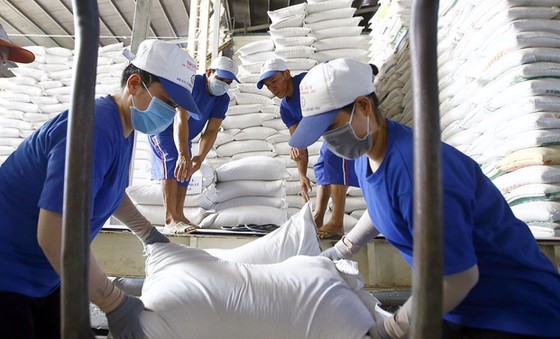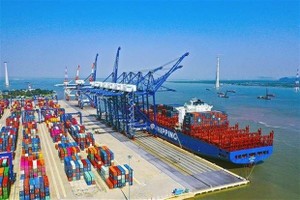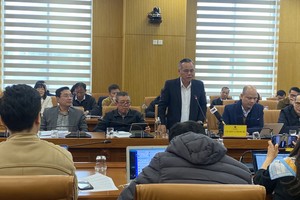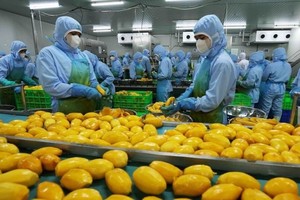 The Vietnamese high-quality rice export to ASEAN nations is strongly growing with high prices. (Photo: SGGP)
The Vietnamese high-quality rice export to ASEAN nations is strongly growing with high prices. (Photo: SGGP)
Vietnam plans to reduce the export volume of white rice because it cannot compete against low-price competitors of Myanmar, Pakistan, and India. Additionally, a consultation session will be organized on May 5 in order to seek ways to boost rice exports to the ASEAN market.
Rice is Vietnam’s main agricultural product that has been exported to the ASEAN market with a population of nearly 700 million over the past years.
Among ASEAN countries, the Philippines is a leading consumer of Vietnamese rice, spending over US$1.25 billion on buying 2.45 million tons of rice, accounting for 10.7 percent of the total volume and 38 percent of the country's total rice export turnover, according to the Ministry of Industry and Trade (MoIT).
In the first quarter of this year, the Philippines spent US$311.08 million to purchase 672,136 tons of rice continuously becoming Vietnam’s biggest importer of rice. The Philippines accounting for 44.7 percent of the total volume and 46.2 percent of the country's total rice export turnover.
Apart from the Philippines, Vietnam also exports rice to important markets of Malaysia, Singapore, Indonesia, and Brunei.
Notably, Vietnam’s rice export to Malaysia recorded a sharp increase in January, up 163.4 percent in volume and 156 percent in turnover compared to December 2021.
Vietnam mainly exports 20-25 percent of broken rice to the Philippines and Indonesia thanks to competitive prices. The country plans to reduce the export volume of white rice and make an adjustment of four million tons by 2030 because it cannot compete against low-price competitors of Myanmar, Pakistan, and India in order to pay attention to strengthening high-quality rice, such as fragrant rice, specialty rice, japonica rice, and high-quality white rice.
In previous years, high-quality rice accounted for 35-40 percent of the country’s rice production. However, this figure reached 75-80 percent in 2020, causing the export price of Vietnamese rice to promptly rise in recent years.
The rice industry needs to review the import demand of each market in the ASEAN region to identify consumption markets of ordinary rice and high-quality rice to enhance the efficiency of rice exports to the ASEAN nations.
























